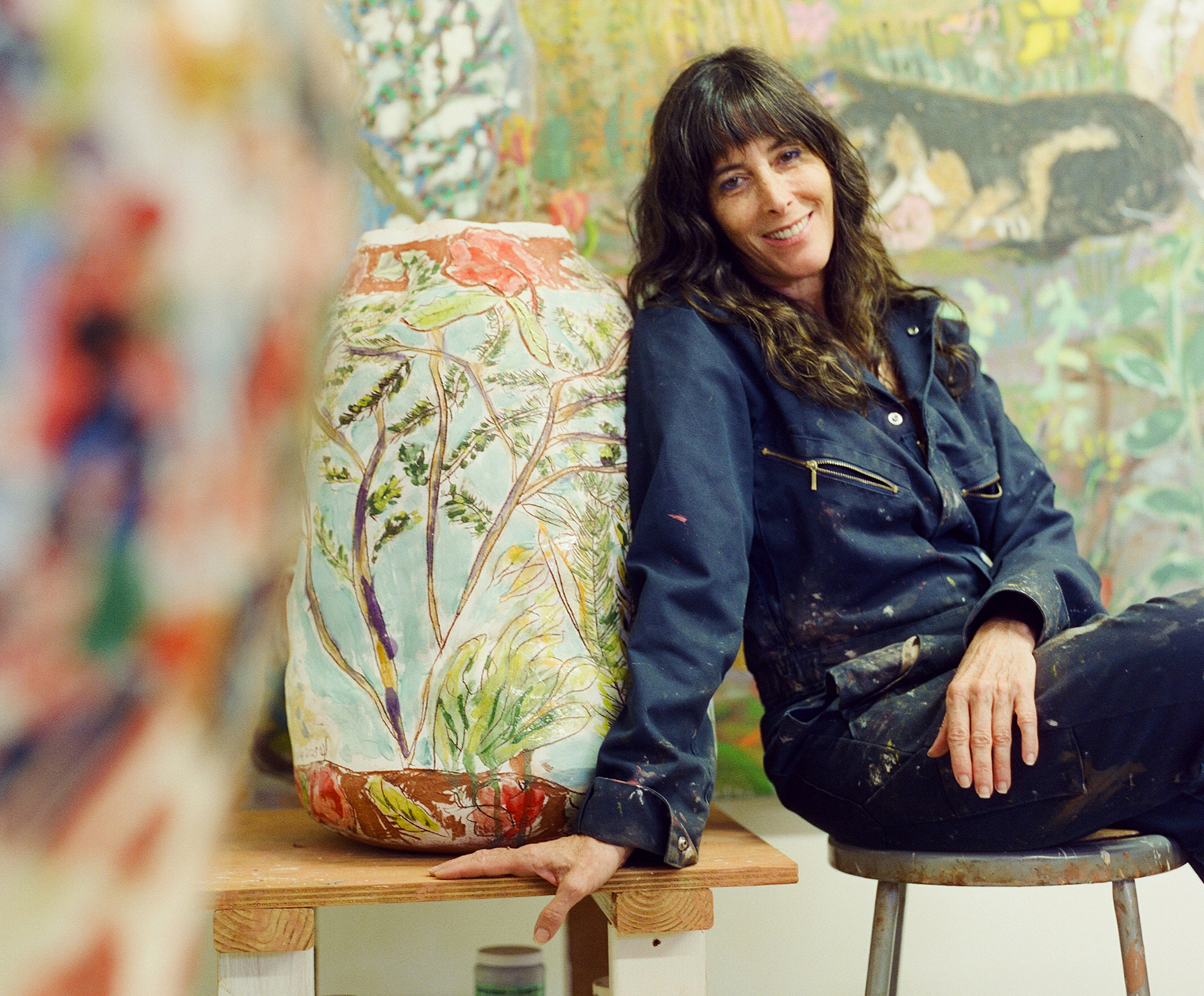
About
The show features a new body of hand-built terra cotta vessels created over the past year — a year marked by upheaval and transformation. Their surfaces hold layered stories: images of daily life, political moments, art historical references, and small flashes of humor. Each pot becomes a kind of moving diary, wrapping personal memory around public experience. Rather than existing as static objects, they unfold in time, asking the viewer to circle them, to follow the rhythm of her mark-making like reading a story without a beginning or an end.
Sorry We’re Closed proudly present Jump Cut, Jennifer Rochlin’s second exhibition with the gallery from November 6 to December 20, 2025.
The show features a new body of hand-built terra cotta vessels created over the past year — a year marked by upheaval and transformation. Their surfaces hold layered stories: images of daily life, political moments, art historical references, and small flashes of humor. Each pot becomes a kind of moving diary, wrapping personal memory around public experience. Rather than existing as static objects, they unfold in time, asking the viewer to circle them, to follow the rhythm of her mark-making like reading a story without a beginning or an end.
The works in Jump Cut emerged from a year that unfolded like a series of cinematic edits — abrupt, tender, and unpredictable. There was the fire in Altadena where Rochlin was living, the protests that filled the streets of Los Angeles, a trip to Hawaii, and a new romance. “Life kept breaking and reassembling itself,” she notes, “and the work followed that rhythm of disruption and repair.”
Rochlin’s vessels are bodily, eccentric, and imposing. Built slowly by hand, their shapes drift away from classical symmetry, their surfaces alive with color, pattern, and image. Viewers are invited to walk around them, tracing the sequence of vignettes that circle their forms — moments from the artist’s life layered with scenes from the collective experience of her city.
Many years ago Rochlin has incorporated a distinctive and collaborative gesture into her process: biting into unfired clay, often inviting friends and collaborators to join her in this form of mark-making. The resulting impressions, later embellished with touches of purple or gold, appear as traces of intimacy — gestures of desire and connection that blur the line between maker and subject. During a summer residency in Somerset, England, she continued this practice, inviting staff from the hosting gallery to come to her studio and bite the pots themselves. The act became a kind of shared ritual, turning the making process into a communal experience of touch, humor, and trust.
A central work in the exhibition enters into conversation with James Ensor’s The Entry of Christ into Brussels in 1889. Though Ensor was Belgian, his painting resides today in Los Angeles at the Getty Museum — a proximity that inspired Rochlin to create what she describes as both an homage and an imaginative return to Brussels. Where Ensor’s processional throngs verge on the chaotic, Rochlin reimagines the scene through Los Angeles during the June protests: palm trees, protest signs, folkloric dancer and , families, coalesce into a vision of resilience and celebration. “Ensor’s crowd threatens to dissolve into spectacle,” she says, “but mine insists on being alive.”
Other works extend this conversation between the personal and political. Two busts of men Rochlin has been involved with appear to leap from the surfaces of vessels, as if fragments of love and memory could no longer be contained. A sculpted hand, referencing Philip Guston, holds a tile with flowers on one side and the words Power to the People on the other — a nod to Guston’s politically charged paintings and a reflection of Rochlin’s own engagement with art’s social movements.
While in Somerset, Rochlin also turned to plein air drawing, painting the surrounding flowers directly onto her pots. These works incorporate references to the exuberant sculptures of Niki de Saint Phalle, whose colorful, jubilant forms add a note of imaginative freedom to Rochlin’s ongoing narrative of vulnerability and strength.
Jump Cut captures how life unfolds — not as a seamless story, but through sudden shifts, collisions, and moments of unexpected continuity. Layered, intimate, and alive, Rochlin’s vessels hold the beauty and complexity of a world in constant motion.